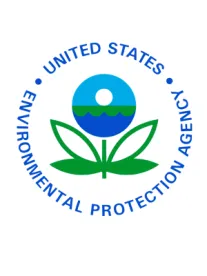On May 27, the Environmental Protection Agency (EPA) and the Army Corps of Engineers (collectively, the agencies) jointly announced the final rule defining “waters of the U.S.” protected by the Clean Water Act (CWA). The agencies’ stated goal is to ensure that waters protected by the Act are “more precisely defined, more predictable, easier for businesses and industry to understand, and consistent with the law and science.” The agencies’ CWA jurisdictional determinations affect many water regulatory programs, including the National Pollutant Discharge Elimination System permit program, the Section 404 wetlands permit program for discharges of dredged and fill material, and the Section 311 oil and hazardous substances program.
EPA received more than one million comments on its April 21, 2014, proposed rule. The proposed definition also received significant media attention and was the subject of numerous congressional hearings. Both the House of Representatives and the Senate are considering legislation that could overturn EPA’s final rule.
According to the agencies, the final rule provides greater clarity regarding which waters are subject to federal jurisdiction. In response to critics, they assert that federal jurisdiction under the final rule is narrower than the existing regulation, no existing exclusions are removed, and no new permitting requirements are mandated as a result of this final rule. Opponents of the rule have asserted that the agencies are using the new rule to broaden their authority to regulate waters that have been exempted or should be subject only to state regulation, creating more ambiguity and infringing on state and local authority.
The agencies assert that the final rule preserves the existing exclusion for wastewater treatment systems designed to meet the requirements of the Clean Water Act. They state that only a “ministerial change” was made to this exclusion, to eliminate a cross reference to a rule that no longer exists. The agencies also deleted a comma from the proposed rule language, after commenters expressed concern that it could be interpreted to exclude wastewater treatment systems that predate the Clean Water Act. The agencies also indicate that the final rule expands the existing wastewater treatment exclusion, by specifically excluding wastewater recycling structures created in dry land. Although wastewater treatment systems continue to be excluded from the definition of the waters of the U. S., the agencies also preserved in the final rule its “continuing practice” of requiring a section 404 permit for wastewater treatment systems actually built in waters of the U. S. and NPDES permit requirements for discharges into jurisdictional waters.
The final rule also specifically adds an exclusion for “stormwater control features constructed to convey, treat or store stormwater and cooling ponds that are created in dry land,” consistent with what the agencies called its “current practice” of excluding such features from the definition of waters of the U.S. They explained in the rule’s preamble that the new exclusion for stormwater control features is meant to include “green infrastructure” projects for which the agencies want to “avoid disincentives to this environmentally friendly trend in stormwater management.” Based on the language in the rule the exclusion for stormwater control features should apply to both privately operated and municipal separate storm sewer systems.
The types of waters most likely impacted by this rule are those waters upstream from or adjacent to traditionally navigable waters, interstate waters, territorial seas, or other covered waters, including water features located in 100-year floodplains or within 1,500 feet from the ordinary high water mark of traditionally navigable water, interstate water, territorial sea or other covered water.
Two Supreme Court decisions have indicated that jurisdiction under the Clean Water Act is based on a water’s significant nexus to more traditional navigable waters . In light of those cases - Solid Waste Agency of Northern Cook County v. U.S. Army Corp of Engineers, and Rapanos v. United States - the agencies have stated that they have decided to establish a more science-based method for determining whether adjacent waters and tributaries have a significant nexus to the traditional navigable waters.
Given the visibility of this rulemaking action, and the number of parties and interest groups that commented on the rule, litigation is likely. The rule will become effective sixty days after publication in the Federal Register, which is expected in the next few weeks.








 />i
/>i

